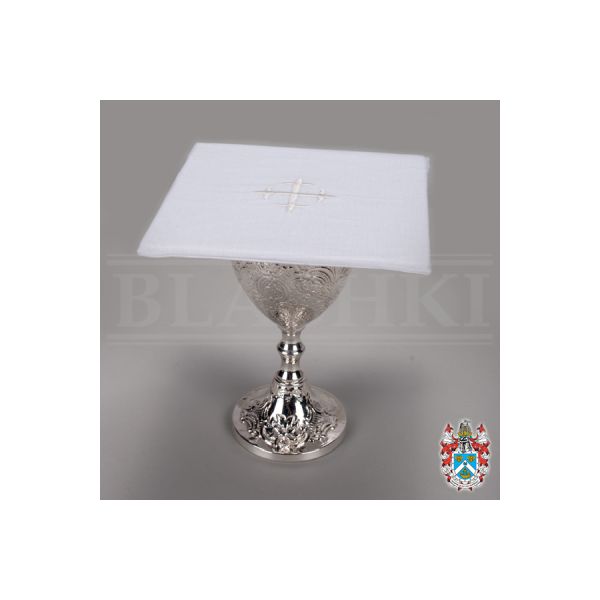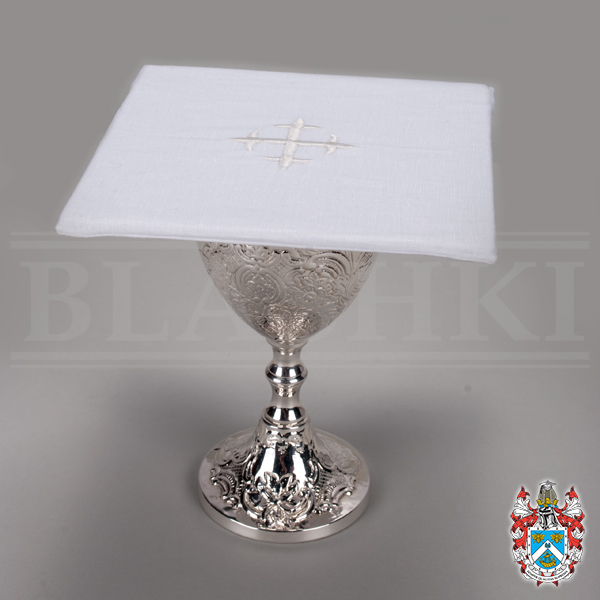Description
P Blashki & Sons are not only manufacturers but also suppliers of high quality regalia and have been for over 160 years. In addition, we proudly offer this Pall of Pure Linen with embroidered emblem.
Regalia is manufactured by our highly qualified staff in Melbourne.
The pall (palla) is a stiffened square card covered with white linen. Top side is embroidered with a cross. Used for covering the chalice during service.
Approx 6 inches square.



